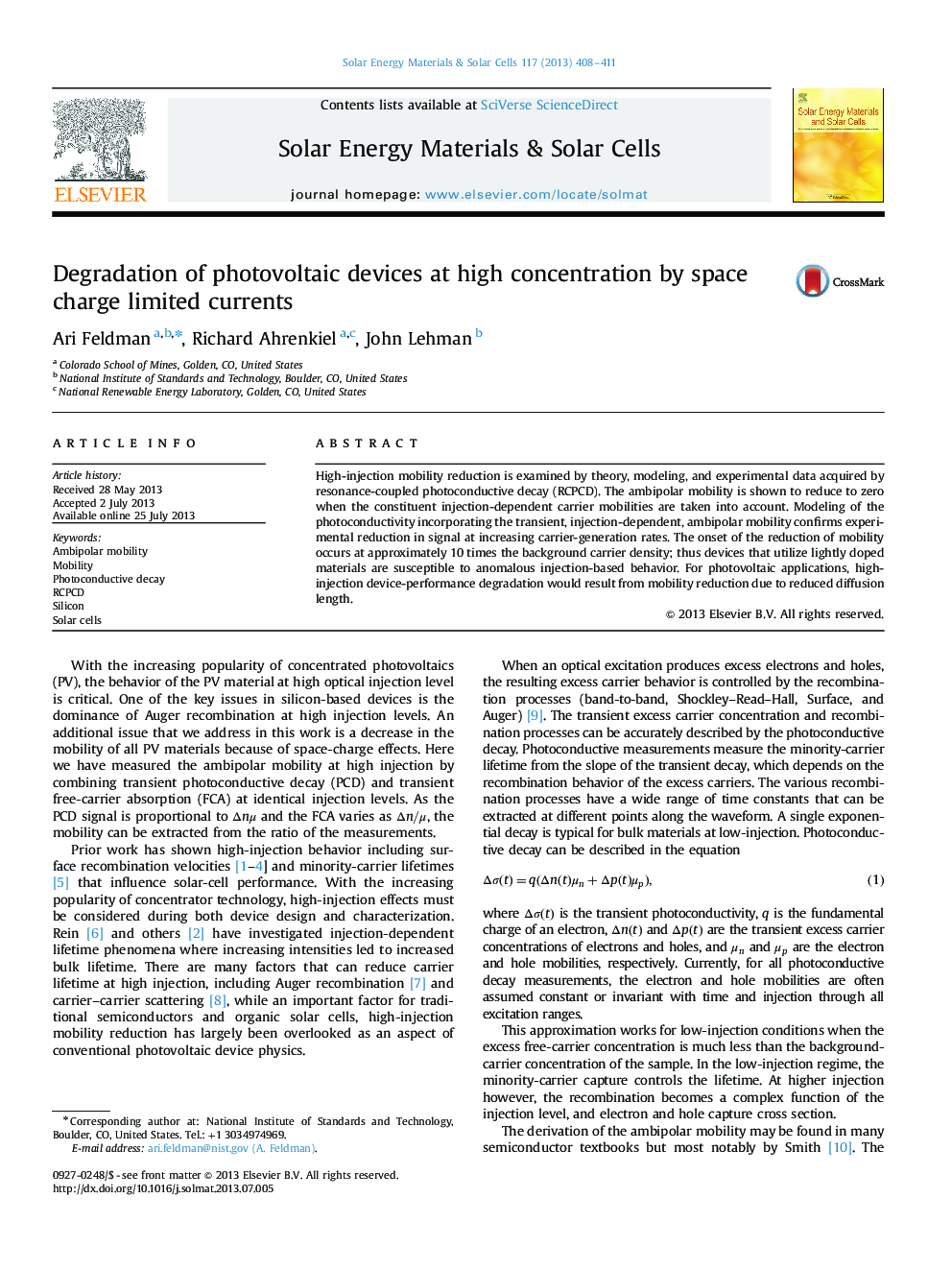| Article ID | Journal | Published Year | Pages | File Type |
|---|---|---|---|---|
| 6536349 | Solar Energy Materials and Solar Cells | 2013 | 4 Pages |
Abstract
High-injection mobility reduction is examined by theory, modeling, and experimental data acquired by resonance-coupled photoconductive decay (RCPCD). The ambipolar mobility is shown to reduce to zero when the constituent injection-dependent carrier mobilities are taken into account. Modeling of the photoconductivity incorporating the transient, injection-dependent, ambipolar mobility confirms experimental reduction in signal at increasing carrier-generation rates. The onset of the reduction of mobility occurs at approximately 10 times the background carrier density; thus devices that utilize lightly doped materials are susceptible to anomalous injection-based behavior. For photovoltaic applications, high-injection device-performance degradation would result from mobility reduction due to reduced diffusion length.
Keywords
Related Topics
Physical Sciences and Engineering
Chemical Engineering
Catalysis
Authors
Ari Feldman, Richard Ahrenkiel, John Lehman,
